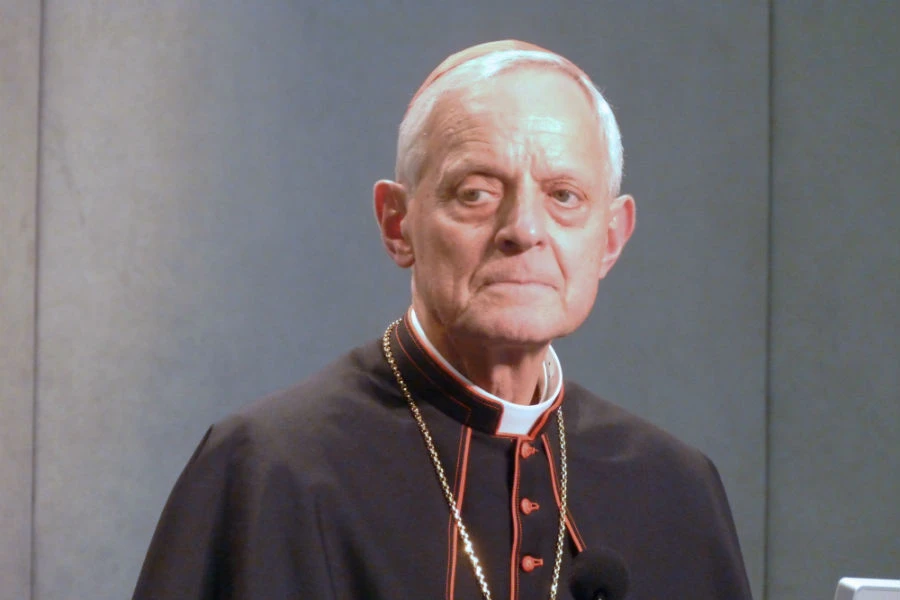
Washington D.C., Oct 15, 2018 / 04:15 pm (CNA).- Just days after Pope Francis accepted the resignation of Cardinal Donald Wuerl as Archbishop of Washington, the D.C. archdiocese has released the names of 28 former clergy of the archdiocese who had been “credibly accused” of sexual abuse of minors dating back to 1948.
Three priests of religious orders who had previously served in archdiocesan parishes or schools were also included in the release.
The posting of the names on the archdiocesan website Oct. 15 marks the first significant act by Cardinal Wuerl as interim administrator of the archdiocese which he led until Friday, and is the culmination of an internal review of archdiocesan files first ordered by Wuerl in 2017.
“This list is a painful reminder of the grave sins committed by clergy, the pain inflicted on innocent young people, and the harm done to the Church’s faithful, for which we continue to seek forgiveness,” said Cardinal Wuerl. He also noted that there had not been a credible allegation of abuse of minors against a Washington priest in nearly twenty years.
“Our strong commitment to accompany survivors of abuse on their path toward healing is unwavering, but it is also important to note that to our knowledge there has not been an incident of abuse of a minor by a priest of the archdiocese in almost two decades. There is also no archdiocesan priest in active ministry who has ever been the subject of a credible allegation of abuse of a minor.”
A press release by the archdiocese underscored the existing safeguarding policies in place in Washington, which include an annual, independently audited report on its child protection work posted on the archdiocesan website and in the Catholic Standard newspaper.
Kim Viti Fiorentino, Chancellor and General Counsel for the archdiocese, said that while survivors of abuse should remain the first concern of everyone, it was also important that Catholics in the capital’s archdiocese understood the efforts being made to ensure that “there is no safer place for a young person than in an Archdiocese of Washington parish or school.”
The Archdiocese of Washington adopted its first a written child protection policy in 1986, with a Case Review Board operating since 1993. Following the adoption of the Dallas Charter and USCCB Essential Norms, the archdiocese has also had a Child Protection Advisory Board with a majority of lay experts as members since 2002.
While the release of the names of credibly accused clergy comes at the end of a year-long process of review, it is final authorization by Cardinal Wuerl as archdiocesan administrator instead of archbishop makes for a conclusion few would have foreseen only months ago.
Ordinarily when a diocese is between bishops and under the care of an administrator the principle of nihil innovator – nothing new – applies, though in this case Cardinal Wuerl was not so much innovating as bringing to a close work he had already begun.
This article has been updated to reflect a clarification by the Archdiocese of Washington made after publication.
If you value the news and views Catholic World Report provides, please consider donating to support our efforts. Your contribution will help us continue to make CWR available to all readers worldwide for free, without a subscription. Thank you for your generosity!
Click here for more information on donating to CWR. Click here to sign up for our newsletter.




I still want somebody to define “credibly accused” for me – officially, in these statements. Credible to whom? Based on what evidence? What would have made a claim *not* credible?
The tip of the iceberg by a guilty party – he’s thrown some raw meat to help cover his trail. In addition, those priests must be turned 0ver to the civil authorities for prosecution. They are sex predators and must be treated that way.
What about credible allegations of abuse against adults – and not only ‘vulnerable’ adults, any adults, including seminarians?
My question exactly! I keep thinking this is not just pedophilia that’s a problem; it also includes perderasty, and nothing is mentioned at all, even though, time and again, homosexuality has been shown to be the problem.
“Credible” is an EXTREMELY LOW STANDARD. It’s likely that among those “credibly” accused, are priests who are innocent of the accusations.
For an accusation to be deemed “credible” in the U.S. Catholic Church, all that is necessary is that it can be demonstrated that the accused and the accuser (or subject) had sufficient time during which they were in the same location and the alleged event COULD HAVE POSSIBLY taken place. Absolutely NO evidence of the alleged event actually occurring is required before an allegation is deemed “credible.”
As a chilling example, if you have ever been alone with another human being on an elevator for 30 seconds, the other person could — under present practice in the Church — accuse you of inappropriately touching him (or her), and it would be “credible” because you had time and opportunity.
Another little known and chilling aspect of this curious lack of “due process,” is that from the moment an allegation is deemed “credible,” the entire burden of proof shifts to the ACCUSED. The priest must either PROVE he DID NOT do that of which he is accused, OR he can simply languish in a state of suspension from ministry for the rest of his natural life.
A canon lawyer/priest friend of mine told me, “You very likely cannot PROVE that you DID NOT eat a ham sandwich yesterday. Unless you have eye witnesses who can account for every single moment of a given day, you cannot DISPROVE any accusation made against you.”
you make a very good point. Today, in the Church and in the political arena it seems that you are GUILTY until you can prove you are innocent. When did that law change.
I’ve been a Catholic for 65 years…I attended Catholic elementary school and been involved in parish life for the past 40 years. I’ve only know faithful, loyal pastors and religious that formed me in the faith.
I understand there are other stories–those that have been abused and I pray for them as well as their predictors. Still I am sure, in the depth of my heart, that the Holy Catholic Church has done much more to advance society and care for God’s people, than it has to hurt the flock. Again, I am not insensitive to those who have been victims of these horrific crimes. But I am confident that prayer is the answer for the victims, the perpetrators and the entire faithful. Pray for healing and forgiveness!
Waiting – but not holding my breath – for the chancery to acknowledge the homosexual behavior of Walter Rossi and Michael Bransfield during their respective tenures as rector of the National Shrine as well as the rest of the gay mafia in the Archdiocese.